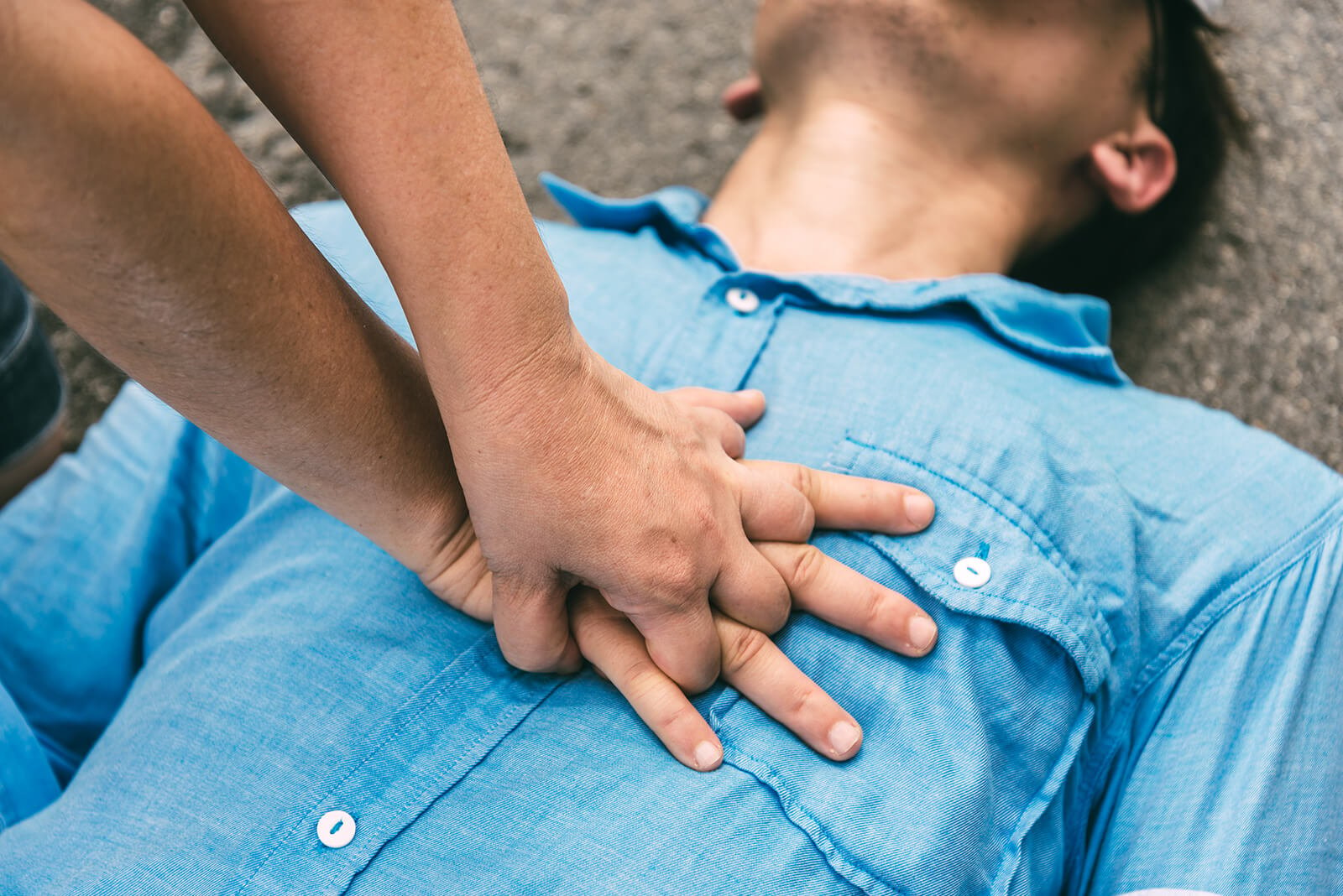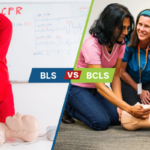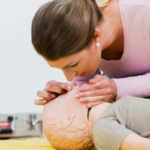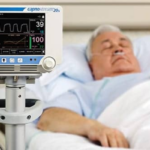
- Last Updated On: May 17, 2024
Adult CPR Simplified: Easy Steps for Saving a Life
Learning cardiopulmonary resuscitation or knowing how to do CPR on adults is a necessary and life-saving procedure used when one is having a heart attack.
Performing CPR, while putting the patient in a recovery position, helps keep oxygenated blood flowing to the brain and other essential organs until medical professionals arrive.
Without starting hands-only CPR immediately, using the heel of your hand and the right pressure for 30 chest compressions, the lack of oxygenated blood can cause permanent damage to vital organs within only a few minutes.
In worst cases, the patient stops breathing and dies in eight-ten minutes when they are not in the recovery position and do not have immediate medical help. The layperson must focus on helping the patient in restoring their heart rhythm and then on opening the airway.
The ratio has to be 30 chest compressions to 2 rescue breath for performing CPR on adults. The hands must put the right pressure on the center of the chest to recover the patient on time.
Note that even if you’re not properly trained, it is always recommended that you offer at least some of the following life-saving assistance that also includes the lessons on head-tilt/chin-lift technique.
This intervention from you as a responsible bystander could make a difference in a dying patient’s life and settle the patient properly in a recovery position.
Preparing to Give CPR to Adults
- Before starting CPR with chest compressions on an adult, take note of the scene. Ensure that you aren’t in immediate danger and that the area is generally relatively safe.
- Next, determine whether the person is conscious or unconscious. If conscious, touch the person in need and loudly ask: “Are you OK?” This question will ensure that you are indeed offering assistance only to someone who truly requires help.
- Once you receive confirmation that the person does indeed need help for a recovery position, immediately designate someone nearby to call 911 while you begin CPR procedures with chest compressions by putting the heel of your hand on the center of the patient’s chest and intertwining your fingers to press into the chest with 2-2.4 inches depth. If there is no one nearby who can call 911, call yourself while also beginning CPR.
- In an emergency, after alerting 911 and getting them on the line, it’s important to designate someone to retrieve an automated external defibrillator (AED) immediately. If there is no AED available or no one to retrieve it, do not leave the person who needs assistance. Instead, stay on the line with 911 and continue administering CPR procedures until help arrives.
- Now, as you begin to perform CPR, ensure that the victim is lying flat on their back. Then, tilt their head back slightly to lift their chin and allow for optimal airflow.
- Finally, assess whether or not the victim is alive before giving them mouth-to-mouth breathing. Put your ear near their mouth and listen carefully for approximately ten seconds. If the victim is indeed not breathing, then it is time to begin CPR procedures.
Note: Take care of your body weight not just your arms when you are preparing to give CPR to adults.
Administering CPR on Adults
- When administering CPR, place your hands, one on top of the other, in the middle of the person’s chest. Then, use your body weight to help you administer hard, fast compressions that are at least two inches deep at a rate of about 100 – 120 compressions per minute. (A trick for knowing how quickly to apply compressions is to push to the beat of “Staying Alive” by the Bee Gees.)
- Next, deliver rescue breaths. Again, ensure that the person’s head is tilted back slightly so that their chin is lifted. Then, pinch their nose shut and place your mouth over the person’s mouth so that it is completely sealed. Finally, begin blowing into their mouth with enough force so that their chest rises. Deliver two rescue breaths, then continue compressions. Continue to alternate between 30 compressions and two breaths until emergency assistance arrives.
Note : If the chest does not rise with the initial rescue breath, re-tilt the head before delivering the second breath. If the chest doesn’t rise with the second breath, the person may be choking. After each subsequent set of 30 chest compressions, and before attempting breaths, look for an object and, if seen, remove it.
It is always recommended to take an accredited first-aid training course which includes CPR training. This information could end up being life-saving for you or a loved one. However, even without training, you can still assist someone in need by calling 911 before attempting CPR to the best of your ability. The emergency dispatcher will instruct you on the proper procedure until help arrives.
Conclusion
American CPRCare Association provides quality healthcare training, as well as first aid and CPR courses, through our online portal. For more information about administering CPR, contact us at 1-888-808-9109 or visit our website today.






